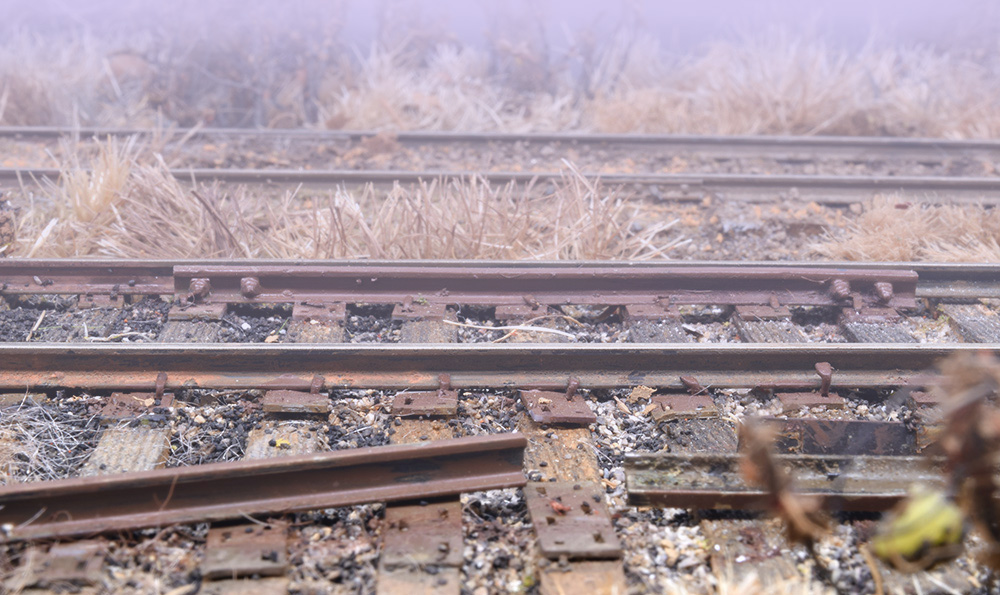
With a lifting fog, thanks to Photoshop, it’s easy to look at an image like this and think there is some magic secret to it, or that the modeling is so far beyond your skills, there is no point in trying.
What you don’t see in photos like this are the countless plywood pacific layouts made with brass snap track, or that horrible fiber tie flex track of the same era.
You don’t see the miles of crude handlaid track that was so out of gauge and rough that nothing would stay on the rails for long.
You don’t see the first handlaid turnouts where the points and frog would derail anything I was foolish enough to send through them.
You don’t see the unpainted rails, the oversized lumps of solder and gigantic feeder wires in plain sight.
You don’t see the frustration from being stuck. From wanting to do better but not knowing how or where to learn. You don’t see the waffling indecisiveness between using commercial and handlaid.
None of that shows up in the photo above.
We’ve so divorced outcomes from the process that people no longer believe they can do such work.
It’s good to consider that if someone learned how to do something, odds are you can learn it too. You may not want to put in the time and effort, but that choice is on you and doesn’t excuse the fact that the process is still learnable.
Mike
This is so true, Mike. Folks look at some of my current models as assume I’ve had similar results for many, many years. When, in fact, everything I do today is the result of the years of trying. So, I guess I am STILL trying.
Thank you Pete. We’re all still trying and learning.
Mike
Very true words from both of you! Most of what I do now on a model is from learning from my mistakes on past models. I am never afraid to experiment which can go good or bad. I assume most serious model builders have a similar story to any of us.
I also never go back to old projects to update them with new technique or materials I have learned since they were built. I enjoy being able to look back at a project and think “wow I thought that was really something at the time.”
I’ve said it before and I’ll say it again…what sets this blog apart from the others and makes it most appealing to me is that you show the entire journey, the wrong turns as well as the right ones and not just the end result. It inspires and tells us “I didn’t just pull up a chair and knock this out of the park…I swung and missed, I fouled some off but I learned along the way and so can you”.
I don’t know Jeff, I just don’t get this I have to be a expert mentality.
Thanks for the kind words. -Mike
There is a disconnect somewhere. People come out with crass statements like, “This is one of those skills that you are either born with, or are not. I am one of the latter,” when all they really mean is that they gave up easily.
Whilst it is true that very few of us will be as good as Van Gogh, Titian or Pollock, most could become reasonably competent amateurs: it just takes time and practice.
No one has to be an expert before trying anything (if they did, how would they ever know if they were an expert). But by trying new things, and practicing them regularly until the skill is acquired and then honed to near perfection, it is possible to become an expert.
Hi Simon,
There are more disconnects in this hobby than I can count.
Mike
One of my favourite quotes is from Michaelangelo: “I am still learning.”
In one way or another, aren’t we all.
Thanks Rene.
Mike